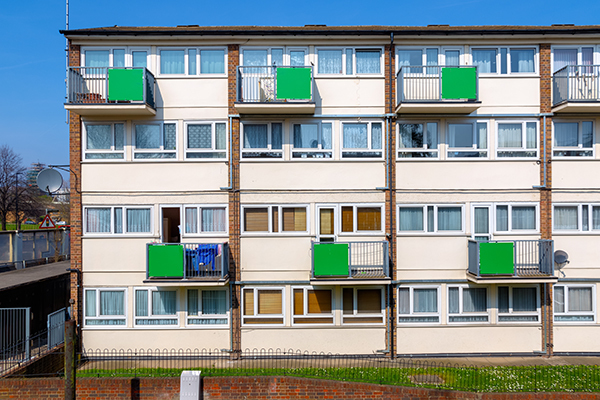You are viewing 1 of your 1 free articles
New borrowing flexibility limited to areas with high private rents
The government’s new borrowing flexibility for new council homes will be limited to areas where private rents are at least £50 a week more than social rents.
A prospectus for £1bn of additional borrowing capacity for councils was published by the Ministry of Housing, Communities and Local Government today, following the announcement of the programme at the Autumn Budget.
The government has previously said it intends this money to be spent in areas of ‘high housing pressure’ and today provided its definition of those areas and a list of the 168 local authorities outside London which qualify.
It said high affordability pressure areas “are defined as those where there is a difference of £50, or more, per week between average social and private rents at the local authority level”.
Authorities which do not meet this criteria are not eligible to bid for the borrowing headroom.
It is not yet clear if the central government grant for social rent, which has also been said to be targeted at areas of high affordability pressure, is subject to the same strict requirement.
This rule applies outside London, with the Greater London Authority due to publish its own prospectus for the operation of the programme in the capital.
The government also announced today that it would make £1.67bn of its £9.1bn affordable housing programme available for affordable homes including social rent.
The £1bn of headroom will be split equally between London and the rest of England, with £400m available in 2019/20 and £300m in each of the next two financial years.
Council borrowing was limited as part of a financing deal introduced in 2012, with the coalition government concerned that building programmes by town halls would push up the deficit.
Councils have long argued that freeing them to borrow more could see them deliver hundreds of thousands of new council houses.
A previous initiative to award additional borrowing power in 2013, only succeeded in allocating £145m of the £300m pot and delivered a fraction of the homes originally intended.
In its prospectus, the government said it had “used the learning” from the failure of that initiative and would make this programme less restrictive.
This time around, councils will be allowed to combine grant and Right to Buy receipts with additional borrowing, and requirements to sell off high value vacant homes as a condition of funding have been dropped.
However, grant and Right to Buy receipts cannot be combined as the government said this would “not represent value for money for the public purse”.
Councils can bid for funding for regeneration schemes, but the government said it would “need to be reassured about the additionality of such bids” before awarding funding.
Bids will be ranked according to value for money, deliverability and affordability with councils that score highest using the government’s affordability metric prioritised.
A timetable for starts and completions will be agreed and monitored with the potential for headroom to be reallocated if it slips. The government expects starts to begin “at latest within the year that borrowing is drawn down”.
Councils can submit joint bids, including as part of a combined authority. However, the homes built cannot be owned by a local housing company or a joint venture vehicle.
The borrowing cannot be used to fund open market housing, rent to buy or intermediate rent. Shared ownership, affordable rent and social rent are included.
The bidding closes on 7 September, and allocations will be announced in the autumn.













